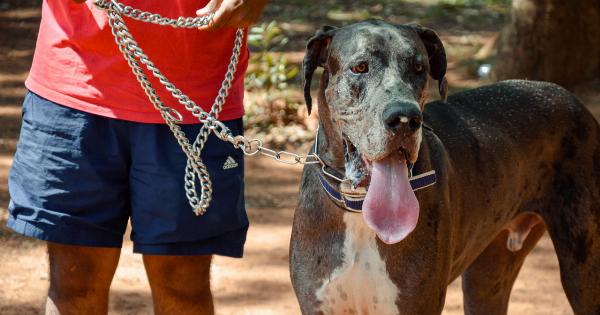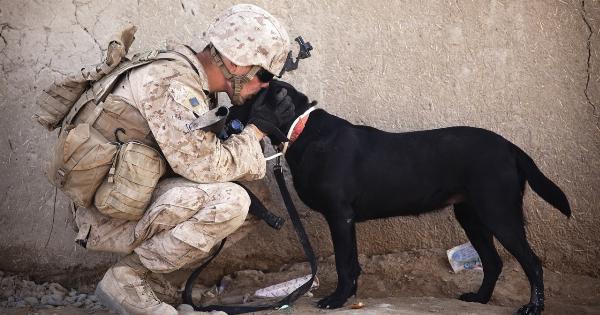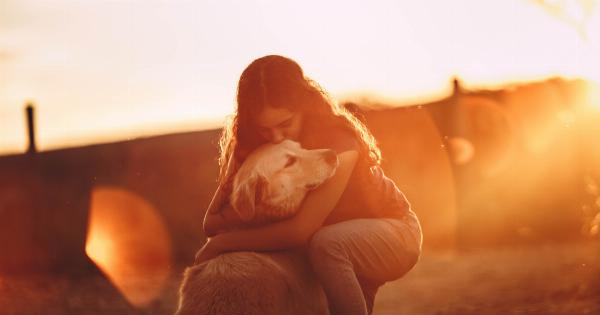Many dog lovers enjoy taking their furry companions to the beach to splash around in the waves and soak up the sun. It’s a great way for dogs to get exercise, fresh air, and enjoy some quality time with their owners.
However, it’s important to be aware of the potential hazards that can be present at the beach, especially for our four-legged friends. In this article, we will explore some common beach hazards for dogs and provide you with helpful tips to keep your canine companion safe.
1. Heatstroke
Dogs are susceptible to heatstroke, particularly in hot weather or during intense physical activity. The beach, with its sand and lack of shade, can become extremely hot, making it dangerous for dogs.
Heatstroke symptoms include excessive panting, drooling, weakness, vomiting, and even collapse. If you notice any of these signs, it’s crucial to cool your dog down immediately by providing shade, offering water to drink, and wetting their body with cool (not cold) water.
It’s advisable to visit a veterinarian even if your dog appears to recover.
2. Sunburn
Just like humans, dogs can also get sunburned. Dogs with light-colored fur and thin coats are more susceptible to sunburn. Areas most commonly affected include the nose, ears, belly, and areas with less hair.
To protect your canine companion, consider using sunscreen specifically formulated for dogs, especially on sensitive areas. Additionally, providing shade and limiting sun exposure during peak hours can greatly reduce the risk of sunburn.
3. Hot Sand
The sand at the beach can become scorching hot, posing a hazard to your dog’s delicate paw pads. Before heading to the beach, do a quick test by touching the sand with the back of your hand.
If it feels too hot for you, it’s likely too hot for your dog as well. Consider using booties or protective paw balms to shield your dog’s paws from the heat. Alternatively, plan your beach visits during cooler parts of the day, such as early mornings or late evenings.
4. Saltwater Ingestion
Dogs love playing in the water, but if they swallow too much saltwater, it can lead to dehydration, electrolyte imbalances, and even salt poisoning. Ensure that your dog has access to fresh water, so they are less tempted to drink saltwater.
Offering regular breaks and providing a shaded area with fresh water can help prevent excessive saltwater ingestion.
5. Rip Currents
Rip currents are strong, fast-moving channels of water that flow away from the shore. They can be extremely dangerous for both humans and dogs. Dogs often try to fight against the current, leading to exhaustion and sometimes drowning.
Keep a close eye on your dog while they are in the water and never let them swim too far from the shore. If your dog gets caught in a rip current, try to swim parallel to the shore until you are out of the current, then swim back towards the beach.
6. Marine Life
Some marine life can pose a threat to dogs at the beach. Jellyfish stings can cause pain, swelling, and allergic reactions.
It’s important to remove any visible tentacles with gloves and then soak the affected area in vinegar or apply a baking soda paste to neutralize the toxins. Additionally, be cautious of crabs, shells, or any sharp objects on the beach that your dog might step on or try to eat.
7. Trash and Debris
Beachgoers often leave behind trash and debris, which can be harmful to dogs if ingested. Broken bottles, discarded food, and even fishing hooks can pose a serious threat.
Always keep a close eye on your dog while they are exploring the beach to prevent them from picking up or consuming any potentially dangerous items. Additionally, it’s a good practice to pick up and dispose of any trash you come across to help keep the beach clean and safe for everyone.
8. Plant Toxicity
Some plants commonly found at the beach, such as poison ivy or poison oak, can cause skin irritation, rashes, or allergic reactions in dogs.
It’s essential to familiarize yourself with the types of plants that are prevalent in your beach area and keep your dog away from them. If your dog comes into contact with any poisonous plants, rinse their paws or affected areas with water and consult a veterinarian if symptoms develop.
9. Beach Etiquette
Ensuring the safety and enjoyment of your dog at the beach also means being a responsible pet owner. Follow beach rules and regulations, including leash laws, to prevent any unwanted incidents.
Not all dogs are comfortable around strangers or other dogs, so it’s essential to be mindful of your dog’s behavior and interactions with others. By practicing good beach etiquette, you contribute to a positive and safe beach experience for everyone.
10. Have Fun, but Stay Alert
While it’s crucial to be aware of the potential hazards at the beach, it’s also essential to have fun and enjoy your time with your dog.
By staying alert and taking appropriate precautions, you can minimize the risks and create lasting memories with your furry friend. Remember, a safe and happy beach outing is always the best kind!.






























